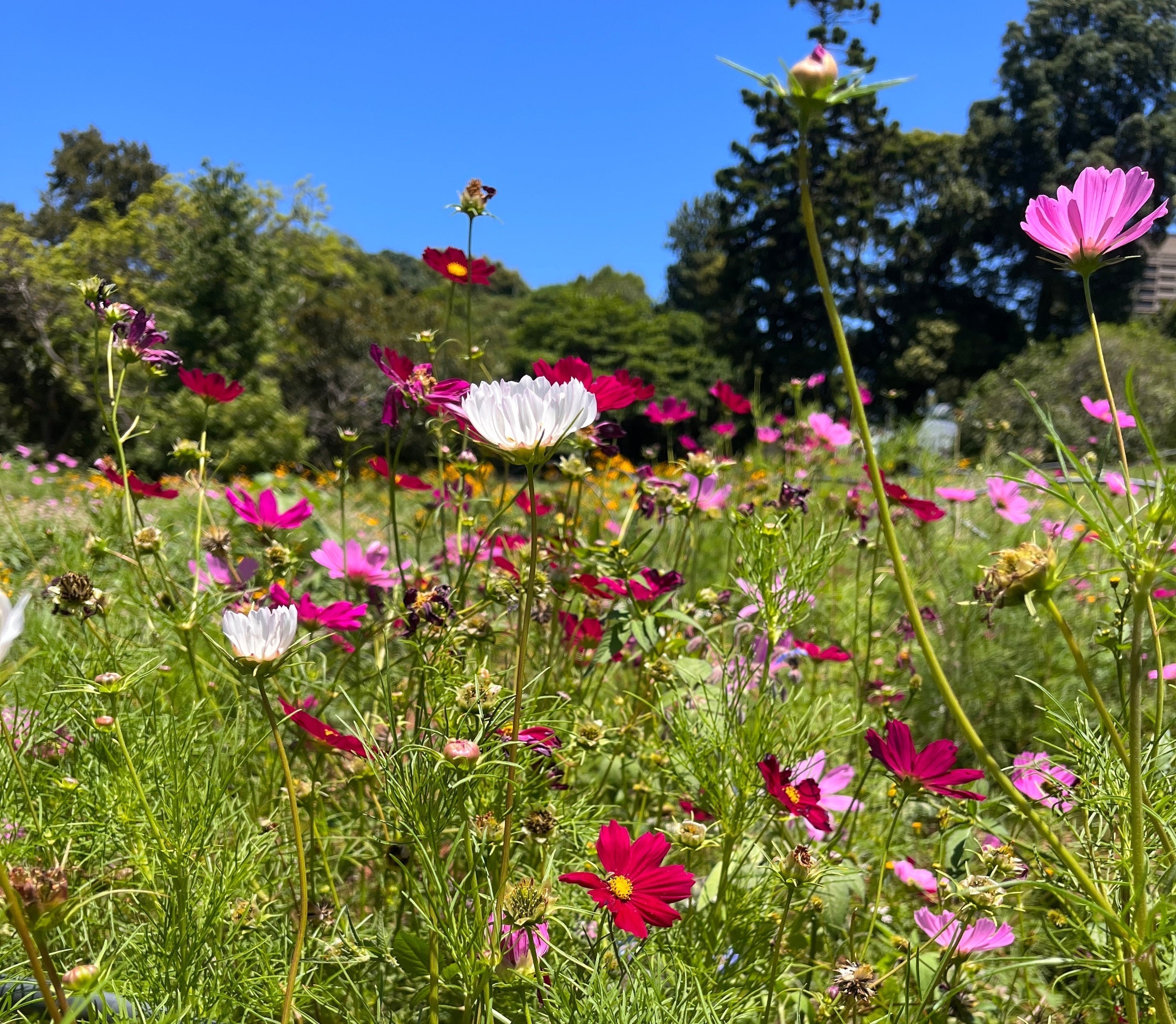
End of Season Care for Your Wildflower Meadow
Your magnificent meadow has been a dazzling display all season, but now the flowering is starting to wind down. What’s next? It's essential to mow meadows every Autumn after flowering ends. This practice ensures sunlight reaches the ground, which is crucial for perennials preparing to bloom next season.
No matter whether you have opted for an annual-only mix or a combination of annuals with perennials, here are our top tips on what you need to do once your annuals have finished flowering.
If You've Sown an Annual-Only Mix
Post-Flowering Care:
- Mowing or Cutting Back: Once your meadow has finished flowering, you should mow or cut the annuals back to help keep your garden neat, tidy and ready for the next planting.
- Wildlife Benefits: If you’re not planning to resow another mix, then consider leaving the clippings in place, as they can provide shelter and food for bees, insects, and other wildlife during the cooler months.
- Seed Longevity: Some annuals may self-seed and reappear in future seasons. To help the seeds already on the ground last longer, remove all the cuttings and spread a thin layer of compost over the area before gently pressing the seeds into the soil. This will help to increase the chance of germination in the spring. However, if your meadow is only filled with annual wildflowers and is beginning to appear a little lacklustre, consider starting again.
- If you have had any diseases in the meadow or find any mildew or fungal growth, it's best to mow and clear everything to prevent the spread of diseases through the soil.
If You've Sown an Annual with Perennial Mix
Post-Flowering Care:
If you have opted for a blend of annual with perennial seed mix, then these tips will help you to fill those bare patches and add a splash of colour and variety to your space.
- Mowing or Cutting Back: Cut the annuals down to around 15cm above the ground. This will help your invigorate the perennials to better establish themselves in the following season.
- Debris Removal: After mowing, be sure to remove all the debris and clear away any old plant material. This will help to prevent it from smothering new perennial growth and reduce the risk of diseases from developing.
- Resowing Annuals: To keep your garden looking full and lush, re-sow an annual-only mix. For the best results, follow the recommended coverage rate for your seeds - not too much or too little. Once sown, compress your seeds to ensure good seed-to-soil contact and then water regularly until the seedlings are around 10-15 cm tall.
Additional Tips
- Composting: Adding a thin layer of compost can enrich the soil and help seeds germinate.
- Watering: Ensure your garden is well-watered after sowing to help your seeds start to establish roots.
- Mulching: Applying a thin layer of sugar-cane mulch can protect the soil over winter, retain moisture, and suppress weeds.
By following these steps, you can enjoy a beautiful, thriving garden year after year. Embrace the flexibility of annuals and the reliability of perennials to create a dynamic and stunning landscape. Happy gardening!
Share

